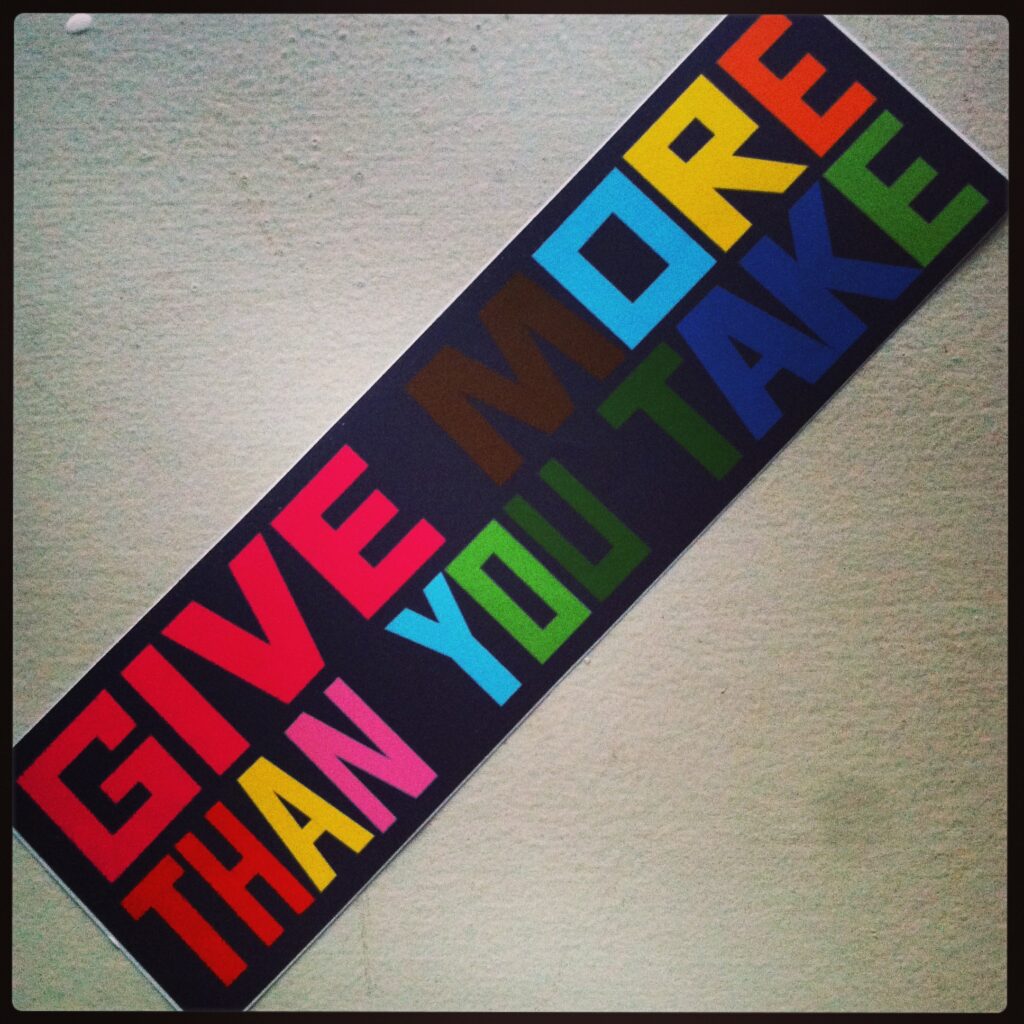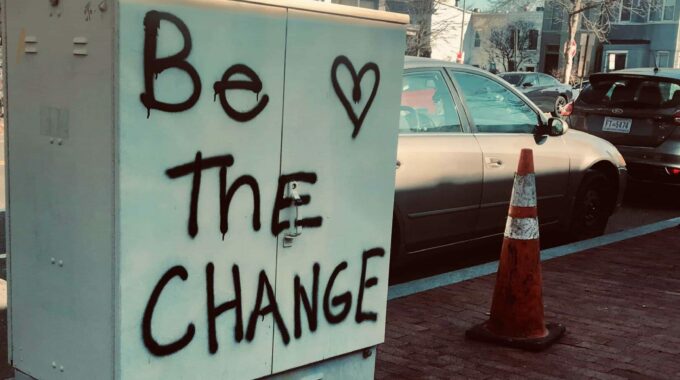by Alberto Aleo
My friend Daniele Prioli (co-founder of Geocom), who is one of the best and most intelligent ethical sellers I have ever met, likes to repeat this adage:
good sellers always leave the customer with something more than they earn.
I had always agreed with the statement though I never really understood why; I was convinced deep down that the concept was correct, but I was unable to use my knowledge of economics to prove why this was so. But my brain works in a strange way, and I keep going over things until I’m able to comprehend them not only with my gut, but also with my head, so I’ve been searching for proof of this statement for some time. I often feel I’m on the point of finding a solution just as I’m falling asleep, but then I drop off and the moment is lost. Well, this time I had set my internal alarm clock and this is what I came up with.

Sales as an exchange of intangible value
Maslow, with his famous pyramid of needs, has taught us that customer satisfaction is divided into a hierarchy of 5 categories of needs: physiological needs, safety, a sense of belonging, esteem and self-actualization. This means that our customers seek within the exchange not only the satisfaction of material needs (such as physiological needs and the need for safety) but of something deeper and less tangible.
The problem is that it is difficult for an intangible to be regulated by the price mechanism.
It follows that if good sellers wish to achieve the highest possible customer satisfaction by offering an intangible value, there will necessarily be a deficit between what they give and what they receive. If we consider this in the light of Adam Smith’s traditional economic theory, centred on maximizing personal gain, this would not be logical.
“Smith was wrong”
 This sentence could sum up the meaning of the studies carried out by Nobel laureate John Nash. Yet to understand the meaning and scope of his findings we must take a step back. We know that the idea of maximizing profit and the pursuit of individual gain informed economic theory for years, and became one of the founding principles of the capitalist system. At a certain point, however, Nash burst upon the scene of theoretical economic principles and his work paved the way for the development of game theory cooperative outcome, which managed to show that in many situations the best result can be achieved not by “competing” but “cooperating”.
This sentence could sum up the meaning of the studies carried out by Nobel laureate John Nash. Yet to understand the meaning and scope of his findings we must take a step back. We know that the idea of maximizing profit and the pursuit of individual gain informed economic theory for years, and became one of the founding principles of the capitalist system. At a certain point, however, Nash burst upon the scene of theoretical economic principles and his work paved the way for the development of game theory cooperative outcome, which managed to show that in many situations the best result can be achieved not by “competing” but “cooperating”.
Basically, Nash has helped economists understand that it is useful not only to pursue the maximization of profit but also to consider the relationship with the other actors of the exchange as an investment.
An example might help to clarify my point: if the value of what I offer to my customer is 100 and in exchange I receive 100, according to the Adams Smith’s earlier theory, I’m working coherently with the principles of maximization of profit and I will obtain the best result for each of the actors in this single interaction. On the other hand, we could say that Nash suggests that sellers should offer 130 to their customers while only receiving 100. This may seem inconsistent with the maximization of gain but it is not. Why?
Incremental negotiation
 Let’s try to explain the differences between a “Smith-style” or static negotiation and the “Nash-style” or incremental negotiation. In the first case (when the offerer and recipient exchange a value of 100), the exchange is perfectly balanced and requires no further interaction between the customer and vendor – the relationship has run its course. In the second case, there is an imbalance: there has been no equal exchange of rewards. In the theory of economic systems just as in physics (both concern systems of energy exchange and hence follow the same laws) we know that any imbalance will tend in time to rebalance, creating a new exchange within the system or even creating a new system. Translated in terms of the market it means that our customers will naturally be induced to return to interact with us, creating new trade and new purchases or even putting us in touch with new customers. We are talking about loyalty in the first case and word of mouth in the latter, two of the main objectives of any decent marketing strategy. So you must transfer greater value to your customers than that you receive, not out of altruism but because you will get better results over time (not within the single exchange).
Let’s try to explain the differences between a “Smith-style” or static negotiation and the “Nash-style” or incremental negotiation. In the first case (when the offerer and recipient exchange a value of 100), the exchange is perfectly balanced and requires no further interaction between the customer and vendor – the relationship has run its course. In the second case, there is an imbalance: there has been no equal exchange of rewards. In the theory of economic systems just as in physics (both concern systems of energy exchange and hence follow the same laws) we know that any imbalance will tend in time to rebalance, creating a new exchange within the system or even creating a new system. Translated in terms of the market it means that our customers will naturally be induced to return to interact with us, creating new trade and new purchases or even putting us in touch with new customers. We are talking about loyalty in the first case and word of mouth in the latter, two of the main objectives of any decent marketing strategy. So you must transfer greater value to your customers than that you receive, not out of altruism but because you will get better results over time (not within the single exchange).
So my friend Daniele was right and now it’s not only my gut telling me so; but more importantly my sleep’s improved.
P.S. John Nash died in a car accident on May 24, 2015. We were greatly saddened when we heard the news. Personally, I am indebted to him for my passion for economics and the subject of my degree thesis, which actually dealt with strategic games theory. Passodue also owes much of our book Sales Ethics to Nash, as it was inspired largely by his ideas. His death is a great loss for economics, and for humanity.
| partem claram semper aspice |
The photos used - where not owned by the editorial team or our guests - are purchased on Adobe Stock and IStockPhoto or downloaded from platforms such as UnSplash or Pexels.
Did you like this post and want to learn more about the topics?
Passodue research on issues related to sales, marketing, ethics and the centrality of human beings within the market logic, officially started in 2012. The results derived from our work are described in the publications and in the books you can find in this section.





This Post Has 0 Comments